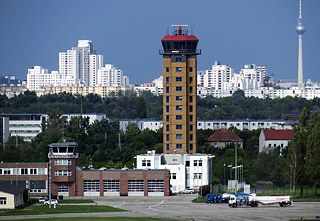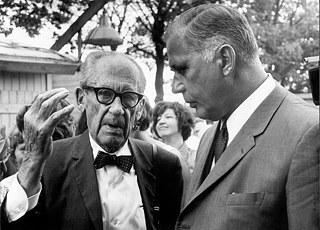Bauhaus
From a model of urban development to a ghettoized estate and back again
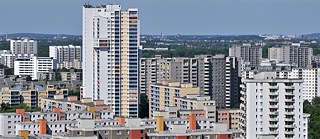
Berlin’s Gropiusstadt is generally seen as the prototypical satellite city. But Bauhaus architect Walter Gropius imagined a very different path for his brainchild.
By Wolfgang Mulke
Norbert and Barbara Kukler’s four square metres of balcony is a tiny, verdant garden. Plants take up every free centimetre of space and a white umbrella shades the comfortable garden chairs. An oasis on the sixth floor of a high-rise in one of Berlin’s more notorious quarters: Gropiusstadt. From this height, it is hard to image how this large housing estate built at the end of the 1960s on the southern edge of the German capital got its negative reputation. The balcony opens on an unimpeded view of the countryside where the Berlin Wall once stood just behind the small railway line, separating East from West Berlin until 1989. “There was a huge bang whenever a deer or rabbit stepped on a mine,” Norbert recalls about the height of the Cold War. Today, the people who live here have the natural world on their doorstep with no walls or barbed wire.
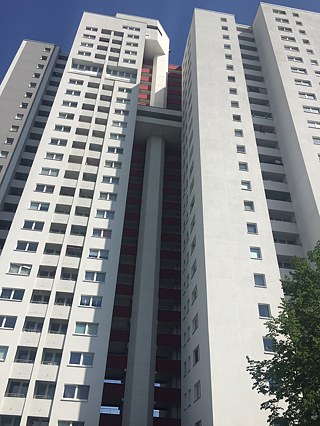
Gropius shut out of the planning
Gropiusstadt probably played a part in this conclusion. Hemmed in by the Democratic Republic of Germany, living space in West Berlin was very scarce. So in 1959, the Berlin Senate commissioned Gropius with the planning of a satellite city. The original blueprints called for 16,400 flats in buildings no more than five stories high. Gropius planned with wide swathes of green between the buildings, and central infrastructure facilities along the underground line into the city. What was ultimately built though differed dramatically from these original plans.
In 1961, the building of the Berlin Wall intensified West Berlin’s housing shortage. The government responded by intensifying development in what would become Gropiusstadt. With Gropius in far-off America, his influence was limited and architect Wils Ebert was entrusted with the actual planning in Germany. The number of flats was upped to 19,000 intended to house 50,000 people, so five stories was no longer tall enough. The Ideal Housing Association building, known as the “Ideal Haus”, topped out at 30 floors and 89 metres and is still one of the tallest residential buildings in Germany today. Gropius was outraged when he heard how his plans for the district had been reworked.
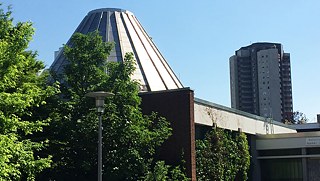
Dreariness sets in
The Bauhaus master would not live to see the final building completed in 1975. By this time, the huge housing estate’s shortcomings had become quite obvious. Berlin’s social housing programme had funded construction, and stipulated that the inexpensive flats could only be rented to people whose income was low enough to qualify. Here Berlin politicians made their first serious mistake: any family that worked hard to improve their financial standing were hit with a substantial increase in rent. So the middle class largely turned its back on Gropiusstadt, and new tenants were primarily from the lower social classes. Gropiusstadt soon became symbolic of the problems facing many satellite cities, and not just in Germany. The wretchedness of the estate in the 1970s was exemplified by the life story of a young woman named Christiane F., who became addicted to heroin at the tender age of 13. Her autobiography, Wir Kinder vom Bahnhof Zoo (1978, Zoo Station: the Story of Christiane F.) is still read in German schools today. It is a sad tale that begins in Gropiusstadt and ends with homelessness and prostitution to support her drug addiction at West Berlin’s Zoo train station.
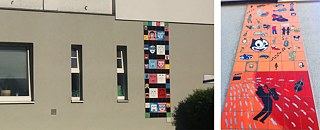
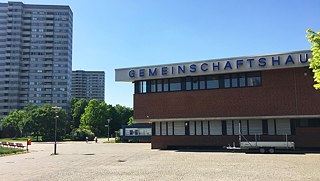
The more beautiful side is widely ignored
Norbert and Barbara Kukler have lived here since 1978 and are really pleased with all the effort their landlord is putting in. It’s a lot of little things, like the Degewo employee who hands out packets of flower seeds in the shopping centre on Wutzkiallee. They are happy where they are: “We don’t want to leave.” Neighbours greet each other and often stop for a little chat. The mix of economic classes in their building is fine and rent is still relatively cheap. Still, the middle class is nowhere near large enough to act as a stabilizing factor in Gropiusstadt again. The housing association offers educational programmes to improve tenants’ employment opportunities, which will ultimately improve the overall atmosphere in the estate: “To get a good mix of renters, you need good educational facilities,” Biernath explains.
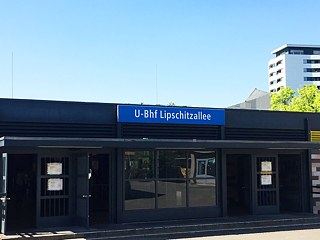
This second, darker side tends to grab more headlines. Half of the 25,000 residents have a migration background. Arab gangs keep the police on tenterhooks. “When I start checking IDs in Gropiusstadt, I am immediately surrounded by ten to fifteen young people,” one police commissioner complained a few years ago. It’s important to remember that the 264-hectare estate is in Berlin’s problematic Neukölln district and not the worst estate there by far. Neukölln has more welfare recipients that any other district in Germany.
